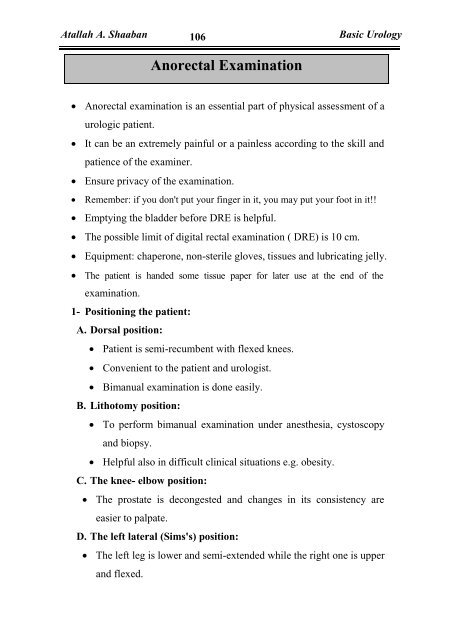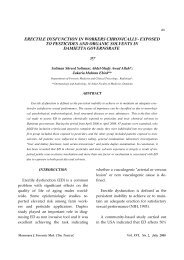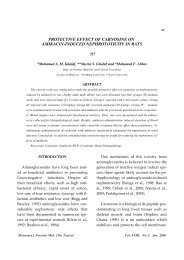You also want an ePaper? Increase the reach of your titles
YUMPU automatically turns print PDFs into web optimized ePapers that Google loves.
Atallah A. Shaaban<br />
116<br />
Anorectal Examination<br />
<strong>Basic</strong> <strong>Urology</strong><br />
Anorectal examination is an essential part of physical assessment of a<br />
urologic patient.<br />
It can be an extremely painful or a painless according to the skill and<br />
patience of the examiner.<br />
Ensure privacy of the examination.<br />
Remember: if you don't put your finger in it, you may put your foot in it!!<br />
Emptying the bladder before DRE is helpful.<br />
The possible limit of digital rectal examination ( DRE) is 10 cm.<br />
Equipment: chaperone, non-sterile gloves, tissues and lubricating jelly.<br />
The patient is handed some tissue paper for later use at the end of the<br />
examination.<br />
1- Positioning the patient:<br />
A. Dorsal position:<br />
Patient is semi-recumbent with flexed knees.<br />
Convenient to the patient and urologist.<br />
Bimanual examination is done easily.<br />
B. Lithotomy position:<br />
To perform bimanual examination under anesthesia, cystoscopy<br />
and biopsy.<br />
Helpful also in difficult clinical situations e.g. obesity.<br />
C. The knee- elbow position:<br />
The prostate is decongested and changes in its consistency are<br />
easier to palpate.<br />
D. The left lateral (Sims's) position:<br />
The left leg is lower and semi-extended while the right one is upper<br />
and flexed.




